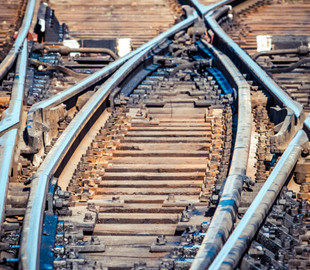Border delays and logistical problems are hampering NATO's ability to quickly deploy troops in response to potential Russian aggression.
When France deployed its troops at the head of a new NATO battle group in Romania, its tanks were loaded onto trains ready to be sent across the continent, but they were delayed at the German border. Since then, French officials like to remind the Alliance that its authority depends on the ability to respond quickly to threats, writes The Telegraph.
“You won't have reliable deterrence if the Russians know we can't overturn a brigade without the tanks lingering on the border,” — said a senior NATO source, describing the French disappointment.
This opinion extends to the higher echelons of the NATO leadership, who know that at the first sign of Russian aggression, they will have to rush to transfer up to 500,000 military personnel to the eastern borders of the Alliance. Since last year's summit in Vilnius, NATO has been preparing for 300,000 military personnel to be on high alert, and force structures have been created in such a way as to provide them with everything necessary to protect the Alliance. The old adage that “infantry wins battles and logistics wins wars” is best suited here.
Railways are a key part of such logistics — rail lines are the fastest and most efficient way to move large quantities of military equipment and vehicles between countries without blocking highways. But the movement of troops in Europe is associated with a complex bureaucratic system and unstable infrastructure — and Germany becomes a major stumbling block on both fronts.
The funds in Germany were spent on the maintenance of battlegroups, rather than the less attractive logistical means, such as universally compatible rail tracks, needed to move them. But now, when war is on the doorstep of Europe, it is time for change again.
Customs clearance of tanks and artillery howitzers for entry into Germany, which is considered the center of European defense due to its geographical location in the heart of the continent, often takes three to four weeks, rather than a few days, as in other countries. Diplomatic clearance is required for any military movement of more than 50 military personnel and 10 vehicles. There are also questions about the reliability of Deutsche Bahn's rail network, which is said to favor passenger and commercial freight over military equipment.
Although Europe's railways are considered the most efficient way to transport military equipment across the continent, there is a shortage of the flatcars needed to do so. Deutsche Bahn only has enough capacity to transport two armored brigades at a time, which usually consist of around 85 tanks and hundreds of armored cars.
Berlin recently concluded an agreement with The Hague and Warsaw to create a new military corridor to facilitate transport across European North Sea ports to NATO's eastern flank. It aims to tackle burdensome red tape, poor infrastructure such as weak bridges, and prioritizes military rail transport when necessary.
As of January, the EU had spent €1.69 billion and allocated a further €807 million to 38 projects aimed at improving the movement of troops. But Lieutenant General Ben Hodges sees the EU program as somewhat of a failure after its initial €6.5 billion budget was slashed.

